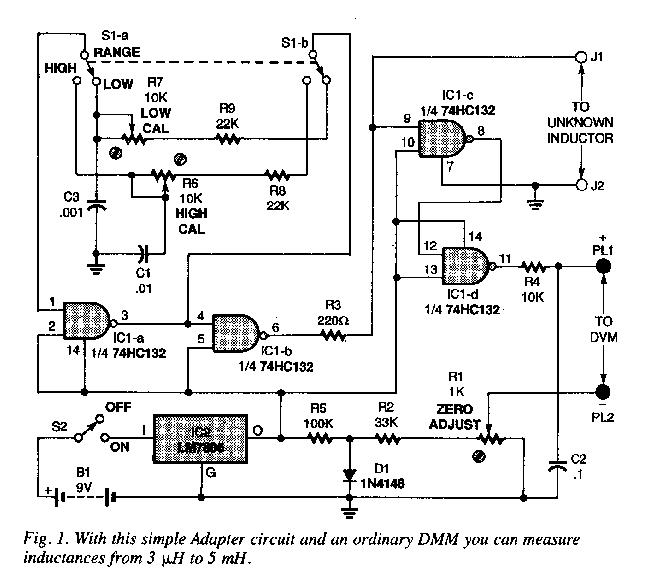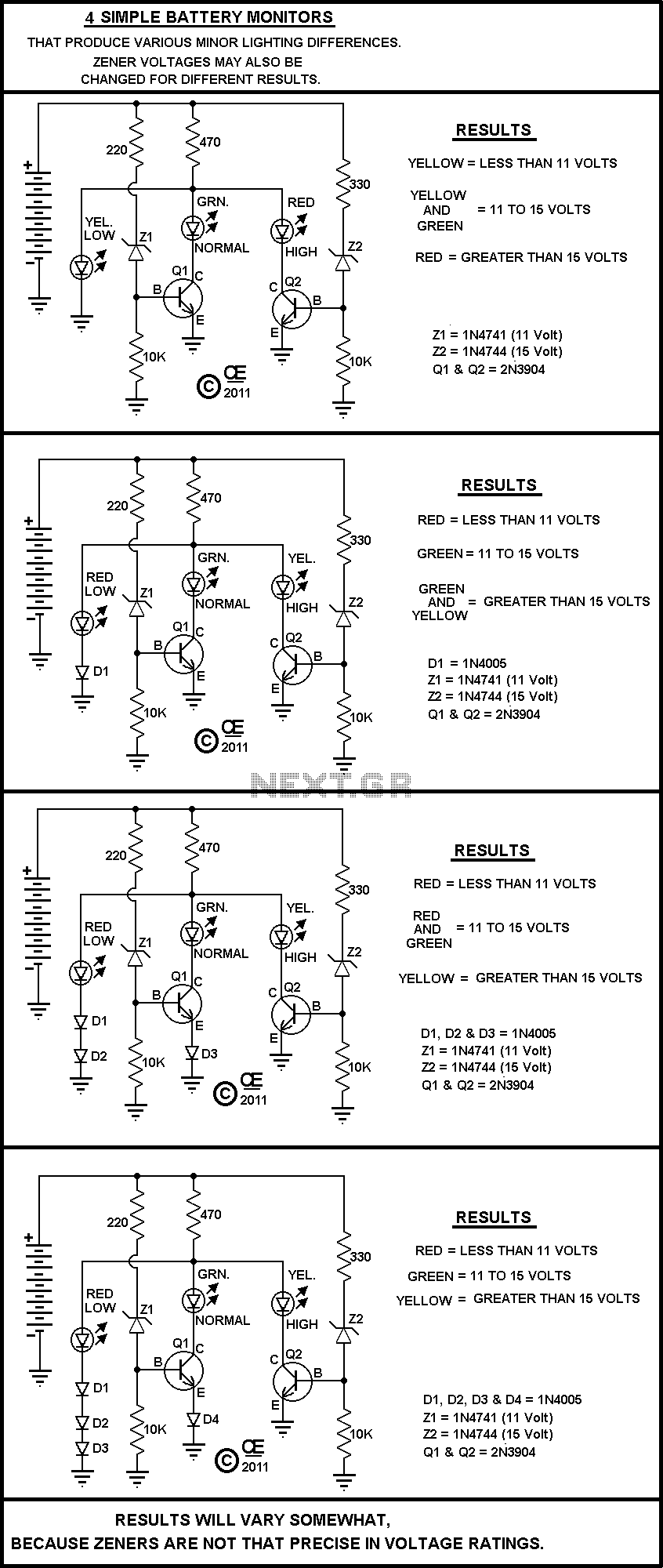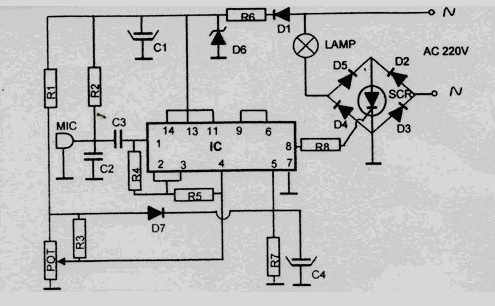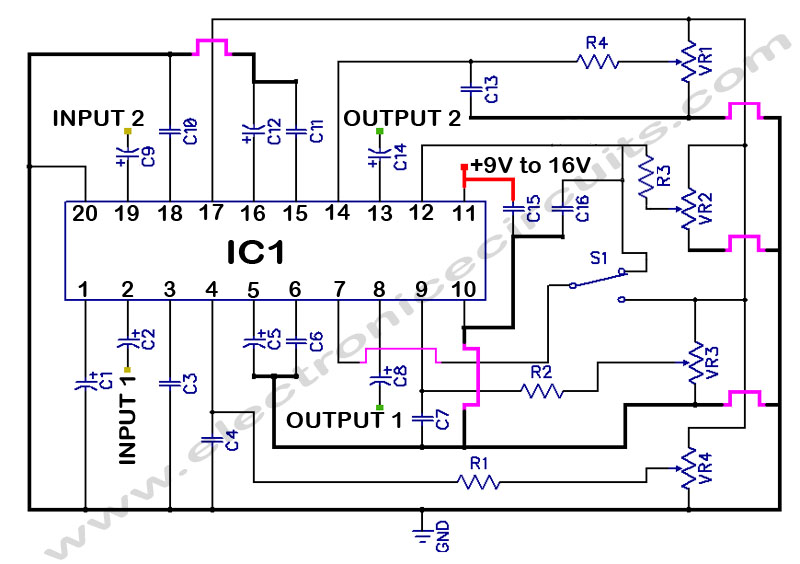
VU Meter Circuit with 10 LED
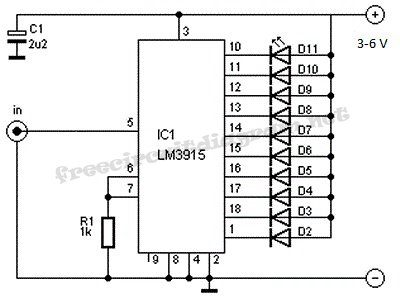
This is a VU meter circuit featuring 10 LEDs. This simple LED VU meter consists of only a few components, yet it serves as an effective indicator for sound levels. The circuit is constructed around an unspecified component.
The VU meter circuit utilizes a series of 10 light-emitting diodes (LEDs) to visually represent audio signal levels. The fundamental operation of the circuit is based on converting an audio signal into a varying voltage, which is then used to drive the LEDs. Typically, the circuit includes an operational amplifier (op-amp) configured as a rectifier to convert the AC audio signal into a DC voltage. This DC voltage is proportional to the amplitude of the audio signal.
The LEDs are arranged in a linear fashion, with each LED representing a specific range of audio levels. A resistor network may be used to limit the current through each LED, ensuring they illuminate at appropriate brightness levels without exceeding their maximum ratings. Additionally, a smoothing capacitor can be included to provide a more stable voltage to the LEDs, reducing flicker and providing a more consistent visual indication of the audio level.
Power for the circuit can be supplied from a low-voltage DC source, such as a battery or a regulated power supply, making it suitable for portable applications. The simplicity of the design allows for easy integration into various audio equipment, providing a clear and immediate visual representation of sound levels, which can be particularly useful in live sound environments or audio mixing situations. Overall, this LED VU meter circuit is an effective tool for monitoring audio signals with minimal complexity.Here is VU meter 10 LED circuit, This simple LED VU meter has only a few parts but it is useful as an indicator for the sound. The circuit is built around an. 🔗 External reference
The VU meter circuit utilizes a series of 10 light-emitting diodes (LEDs) to visually represent audio signal levels. The fundamental operation of the circuit is based on converting an audio signal into a varying voltage, which is then used to drive the LEDs. Typically, the circuit includes an operational amplifier (op-amp) configured as a rectifier to convert the AC audio signal into a DC voltage. This DC voltage is proportional to the amplitude of the audio signal.
The LEDs are arranged in a linear fashion, with each LED representing a specific range of audio levels. A resistor network may be used to limit the current through each LED, ensuring they illuminate at appropriate brightness levels without exceeding their maximum ratings. Additionally, a smoothing capacitor can be included to provide a more stable voltage to the LEDs, reducing flicker and providing a more consistent visual indication of the audio level.
Power for the circuit can be supplied from a low-voltage DC source, such as a battery or a regulated power supply, making it suitable for portable applications. The simplicity of the design allows for easy integration into various audio equipment, providing a clear and immediate visual representation of sound levels, which can be particularly useful in live sound environments or audio mixing situations. Overall, this LED VU meter circuit is an effective tool for monitoring audio signals with minimal complexity.Here is VU meter 10 LED circuit, This simple LED VU meter has only a few parts but it is useful as an indicator for the sound. The circuit is built around an. 🔗 External reference


